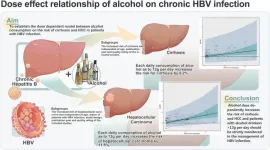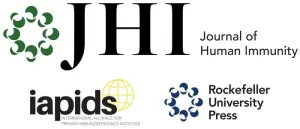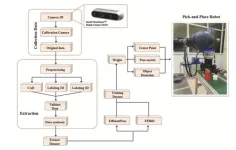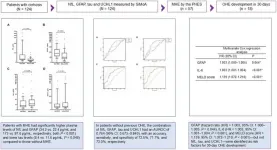(Press-News.org) Homo erectus was able to adapt to and survive in desert-like environments at least 1.2 million years ago, according to a paper published in Communications Earth & Environment. The findings suggest that behavioural adaptations included returning repeatedly over thousands of years to specific rivers and ponds for fresh water, and the development of specialised tools. The authors propose that this capability to adapt may have led to the expansion of H. erectus’ geographic range.
There has been significant debate over when early hominins acquired the adaptability to survive in extreme environments, such as deserts or rainforests. Previous research has frequently concluded that only Homo sapiens were able to adapt to such environments.
Julio Mercader, Paul Durkin, and colleagues collected archaeological, geological, and palaeoclimatic data at Engaji Nanyori in Oldupai Gorge, Tanzania — a key early hominin archaeological site. The authors report that between approximately 1.2 million and 1 million years ago, semi-desert conditions persisted in the area with characteristic plant life evident. The archaeological data suggests that groups of H. erectus in the area adapted to the conditions over the period by repeatedly returning to live in locations with freshwater availability such as ponds, and developing specialised stone tools such as scrapers and notched tools (known as denticulates), which the authors suggest were probably used to increase the efficiency of butchery.
The authors suggest that, together, these findings demonstrate that H. erectus had a much greater adaptability to survive in extreme environments than was previously thought. The authors conclude that their results contradict previous hypotheses that only H. sapiens could adapt to extreme ecosystems, and that H. erectus may have been a generalist species able to survive in a variety of landscapes in Africa and Eurasia.
END
Evolution: Early humans adapted to extreme desert conditions over one million years ago
2025-01-16
ELSE PRESS RELEASES FROM THIS DATE:
Race and ethnicity and diffusion of telemedicine in Medicaid for schizophrenia care after onset of the COVID-19 pandemic
2025-01-16
About The Study: In this cohort study of Medicaid beneficiaries with schizophrenia, telemental health care diffused rapidly after the onset of the COVID-19 pandemic, particularly in state-operated agencies. Together, agency-level and beneficiary-level race and ethnicity findings suggest within-agency racial and ethnic differences in diffusion of telemental health care. States should monitor the diffusion of innovations across vulnerable populations.
Corresponding Author: To contact the corresponding author, Sharon-Lise Normand, PhD, email sharon@hcp.med.harvard.edu.
Embed this link to provide your readers free access to the full-text article This ...
Changes in support for advance provision and over-the-counter access to medication abortion
2025-01-16
About The Study: In this serial cross-sectional analysis of people ages 15 to 49 before Dobbs and 1 year after Dobbs, findings suggested that national support for expanded access to medication abortion has grown. Alternative models of care, such as advance provision and over-the-counter, have the potential to offer a promising approach to abortion care, particularly for people living in abortion-restricted states.
Corresponding Author: To contact the corresponding author, M. Antonia Biggs, PhD, email antonia.biggs@ucsf.edu.
To access the embargoed study: Visit ...
Protein level predicts immunotherapy response in bowel cancer
2025-01-16
Francis Crick Institute press release
Under strict embargo: 16:00hrs GMT Thursday 16 January 2025
Peer reviewed
Observational study
People and cells
Protein level predicts immunotherapy response in bowel cancer
Researchers at the Francis Crick Institute and Barts Cancer Institute, Queen Mary University of London, have shown that the amount of a protein called CD74 can indicate which people with bowel cancer may respond best to immunotherapy.
If integrated into the clinic, testing for this protein could potentially allow hundreds of previously ineligible patients to benefit ...
The staying power of bifocal contact lens benefits in young kids
2025-01-16
COLUMBUS, Ohio – Young nearsighted kids who wear bifocal contact lenses that slow uncoordinated eye growth do not lose the benefits of the treatment once they stop wearing the lenses, new research shows.
The study is a follow-up to a clinical trial published in 2020 showing that soft multifocal contact lenses with a heavy dose of added reading power dramatically slowed further progression of myopia in kids as young as 7 years old. Researchers wondered if discontinuing that treatment might cause a rebound of faster-than-normal eye growth that wipes out the benefit.
In the new trial, nearsighted kids wore ...
Dose-dependent relationship between alcohol consumption and the risks of hepatitis b virus-associated cirrhosis and hepatocellular carcinoma: A meta-analysis and systematic review
2025-01-16
Background and Aims
The quantitative effects of alcohol consumption on cirrhosis and hepatocellular carcinoma (HCC) in hepatitis B virus (HBV) infection are unknown. This study aimed to establish a dose-dependent model of alcohol consumption on the risks of cirrhosis and HCC.
Methods
PubMed, Embase, the Cochrane Library, Web of Science, and four Chinese databases were searched for studies published from their inception to 15 May 2024. A random-effects model was used to pool the data on the incidence of cirrhosis and HCC, and a dose-dependent model of alcohol’s effect on cirrhosis and HCC was established.
Results
A total of 33,272 HBV patients ...
International Alliance for Primary Immunodeficiency Societies selects Rockefeller University Press to publish new Journal of Human Immunity
2025-01-16
January 16, 2025 – New York, NY – The International Alliance for Primary Immunodeficiency Societies (IAPIDS) and Rockefeller University Press (RUP) have entered a partnership to launch Journal of Human Immunity (JHI), the official open access journal of IAPIDS. This collaboration will ensure that JHI emerges as the destination for exciting research into human immunity, with a particular focus on inborn errors of immunity.
“The Journal of Human Immunity represents a bold step forward in advancing ...
Leader in mission-driven open publishing wins APE Award for Innovation in Scholarly Communication
2025-01-16
Digital Science is pleased to announce that Dr Raym Crow, a leading figure in mission-driven, sustainable open publishing models, has won the 2025 APE Award for Innovation in Scholarly Communication.
The award – a joint initiative between Digital Science and the Berlin Institute for Scholarly Publishing (BISP) – has been announced at the 20th Academic Publishing in Europe (APE) Conference in Berlin, Germany.
The APE award is presented to an individual who has brought innovation in scholarly communication to the community, through infrastructure, technology, business models, output on the topic, theory, or practice.
With more than ...
Innovative 6D pose dataset sets new standard for robotic grasping performance
2025-01-16
Accurate object pose estimation refers to the ability of a robot to determine both the position and orientation of an object. It is essential for robotics, especially in pick-and-place tasks, which are crucial in industries such as manufacturing and logistics. As robots are increasingly tasked with complex operations, their ability to precisely determine the six degrees of freedom (6D pose) of objects, position, and orientation, becomes critical. This ability ensures that robots can interact with objects in a reliable and safe manner. However, despite advancements in deep learning, the performance of 6D pose estimation algorithms largely depends ...
Evaluation of plasma neurodegenerative biomarkers for diagnosing minimal hepatic encephalopathy and predicting overt hepatic encephalopathy in Chinese patients with hepatic cirrhosis
2025-01-16
Background and Aims
The performance of neurodegenerative biomarkers—neurofilament light chain (NfL), glial fibrillary acidic protein (GFAP), tau, and ubiquitin carboxy-terminal hydrolase L1 (UCHL1)—in diagnosing minimal hepatic encephalopathy (MHE) has not been systematically evaluated, simultaneously, nor have their associations with the development of overt hepatic encephalopathy (OHE). This study aimed to evaluate the performance of plasma NfL, GFAP, tau, and UCHL1 in diagnosing MHE and predicting the development of OHE in Chinese patients with hepatic cirrhosis.
Methods
In this prospective study, 124 patients ...
MEXICO: How animals, people, and rituals created Teotihuacán
2025-01-16
The remains of nearly 200 animals found in Mexico’s Teotihuacán are helping reconstruct history.
The unearthing and significance of these remains, found in four chambers within the Moon Pyramid — dating back nearly 2,000 years — are central in Nawa Sugiyama’s new book, “Animal Matter: Ritual, Place, and Sovereignty at the Moon Pyramid of Teotihuacan,” published by Oxford University Press.
Teotihuacán, one of the first megacities of the Western Hemisphere and now a UNESCO World Heritage site, is situated ...





